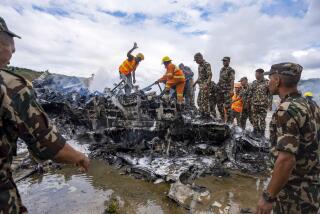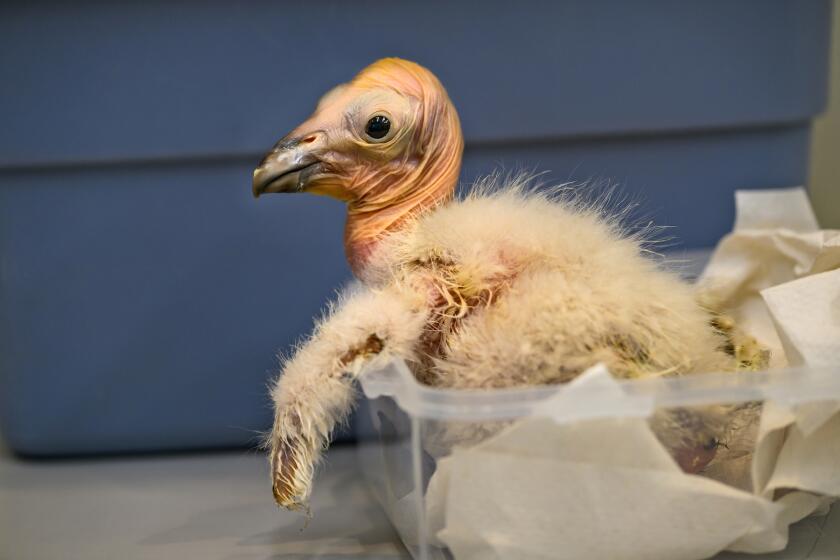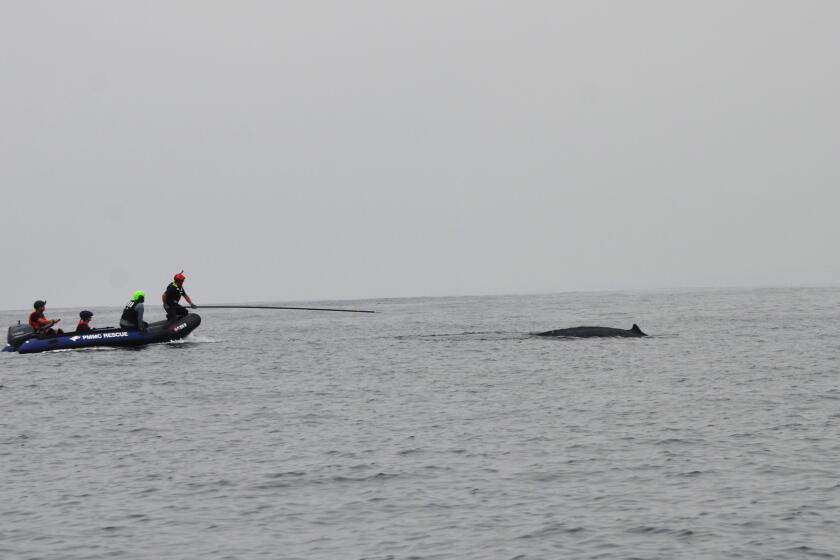Ape’s Death Creates Turmoil at Vegas Zoo : Animals: Workers, volunteers criticize director for allowing the creature to be beaten by a bigger one.
Since the death of Mujica, there has been nothing but trouble in this city’s only public zoo.
The 2 1/2-year-old Barbary ape had been raised by people since his birth in captivity. When it came time to introduce Mujica to his fellow primates, a 35-pound female named Mimi, showing off her dominance, relentlessly beat the 15-pound Mujica.
In less than 24 hours, the smaller ape was dead.
“It’s the nature of the beast,” said Pat Dingle, director of the Zoological-Botanical Park of Southern Nevada, explaining the dangers of putting a stranger in the same cage with an established colony of apes.
But many of Dingle’s employees see things differently.
They say Mujica should have been provided a route to escape the wrath of Mimi, or Dingle should have allowed zoo keepers to hose down the two struggling animals to break up the fight.
“Pat (Dingle) let it go too far,” said Sherri Patterson, the former head animal keeper. “He didn’t have the judgment to pull Mujica out.”
Seven of the park’s volunteers have resigned in protest. In retaliation, Dingle fired Patterson, along with the zoo’s volunteer veterinarian, who was told this week that his free services were no longer needed.
Earlier this month, a group of about 25 protesters, many of them former zoo employees, staged a weekend demonstration outside the zoo’s gates calling for Dingle’s ouster.
Dingle, 46, a retired North Las Vegas homicide detective, says he received a telephoned death threat at his home after publicity of Mujica’s death last May. Local television stations have run numerous stories about Mujica, including a videotape of the ape’s beating provided by former zoo volunteers.
Ironically, the negative publicity may have actually boosted visitation to this small zoo, which has about 150 animals, 45 outdoor exhibits and an annual operating budget of $250,000. Dingle said there has been a 30% increase in ticket sales since Mujica’s death.
Increased visitation aside, trouble still plagues the Las Vegas zoo.
The U.S. Department of Agriculture, in charge of enforcing the Animal Welfare Act, inspected the zoo and found that Dingle was not in compliance with the law, according to an inspector’s report.
The report cited the decision to put the apes together, lack of overnight supervision of Mujica and Mimi, and failure to provide prompt medical care for the injured ape. The federal investigation is continuing.
In his defense, Dingle said he decided it was necessary to put Mujica in with his own kind so the ape could have companionship.
Dingle has the approval of the San Diego Zoo’s primate expert, Karen Killmar, who told a San Diego Zoo spokesman that she thought the plan for Mujica’s introduction to the ape colony sounded logical.
“Introduction is a risk that you have to take for the young animal’s sake,” said Jeff Jowett, spokesman for the San Diego Zoo. “Sometimes, even with the best preparation, things go wrong.”
The San Diego Zoo loaned the Barbary apes--native to northern Africa--to Dingle for a breeding program. There are no plans to take back the animals, Jowett said.
In a new twist, Dingle said he now suspects that Mujica was not beaten to death, as the fired veterinarian, George Stoecklin, concluded in his necropsy.
Instead, Dingle said he believes that Mujica may have been poisoned by radical animal rights activists hoping to close the four-acre facility.
The allegation would be hard to prove because Mujica’s body was taken to the city’s dump and is probably under mounds of dead cats and dogs in a section reserved for animal carcasses.
Stoecklin said Mujica’s stomach was empty, ruling out food poisoning. Still, Stoecklin said he cannot be sure poison did not kill Mujica because he did not perform chemical tests to search for toxins in the ape’s body.
He considered the procedure unnecessary because it seemed obvious that the ape had died from blunt trauma and shock, Stoecklin said.
More to Read
Sign up for Essential California
The most important California stories and recommendations in your inbox every morning.
You may occasionally receive promotional content from the Los Angeles Times.






